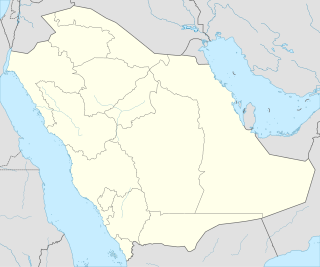 W
WBabi Yar Holocaust Memorial Center is an educational institution that documents, explains and commemorates the Babi Yar shootings of September 1941 and aims to broaden and sustain the memory of the Holocaust in Eastern Europe, taking into account geopolitical changes during the 20th century. In 2016 the discussion of the Memorial project began. The Memorial Center is planned to be created in Kyiv, Ukraine, by 2023.
 W
WThe Berlin Palace, formally the Royal Palace, on the Museum Island in Berlin was the main residence of the House of Hohenzollern from 1443 to 1918. Expanded by order of King Frederick I of Prussia according to plans by Andreas Schlüter from 1689 to 1713, it was thereafter considered a major work of Prussian Baroque architecture. The former royal palace was one of Berlin’s largest buildings and shaped the cityscape with its 60-meter (200 ft)-high dome. Damaged during the Allied bombing in World War II, it was demolished by the East German authorities in 1950, and later became the location of the modernist East German Palace of the Republic. After German reunification and several years of debate and discussion, the Palace of the Republic was itself demolished and the Berlin Palace was reconstructed to house the Humboldt Forum museum, a process completed in 2020.
 W
WThe Brodsky Synagogue in Odessa was built by the Jews from Brody in 1863 in Odessa, Ukraine. It was the largest synagogue in the south of the then Russian Empire. People came from all over the world to hear cantors sing there.
 W
WThe Camp de Rivesaltes, also known as Camp Maréchal Joffre, was a military camp in the commune of Rivesaltes nearby Perpignan in the department of Pyrénées-Orientales in the South of France. The camp was also used to detain civil populations several times between 1939 and 2007. Its darkest period was in 1942, when 2,251 Jews, including 110 children, were transferred from Rivesaltes via the Drancy internment camp to the Nazi extermination camp Auschwitz, where they were murdered.
 W
WThe Führermuseum or Fuhrer-Museum, also referred to as the Linz art gallery, was an unrealized art museum within a cultural complex planned by Adolf Hitler for his hometown, the Austrian city of Linz, near his birthplace of Braunau. Its purpose was to display a selection of the art bought, confiscated or stolen by the Nazis from throughout Europe during World War II. The cultural district was to be part of an overall plan to recreate Linz, turning it into a cultural capital of Nazi Germany and one of the greatest art centers of Europe, overshadowing Vienna, for which Hitler had a personal distaste. He wanted to make the city more beautiful than Budapest, so it would be the most beautiful on the Danube River, as well as an industrial powerhouse and a hub of trade; the museum was planned to be one of the greatest in Europe.
 W
WThe King Abdulaziz Center for World Culture (Ithra) also known as Ithra, is situated in Dhahran, Saudi Arabia. It was built by Saudi Aramco and inaugurated by King Salman bin Abdulaziz on December 1, 2016. It is operated by Saudi Aramco and is currently the company’s main corporate social responsibility initiative with a focus on culture, learning and cross-cultural activities. The Center is located where the first commercial Saudi oilfield was found in March 1938. The Center incorporates a museum, children museum, library, cinema, theater, and exhibition halls. It was designed by the Norwegian architectural firm Snøhetta. The Center has been listed in Time magazine as one of the world’s top 100 places to visit and attracted one million visitors in 2019. The director of Ithra is Hussain N. Hanbazazah.
 W
WThe House of European History (HEH) is a museum in Brussels, Belgium focusing on the history of Europe. The permanent exhibition begins with the myth of the goddess Europa, delving into Europe's ancient roots and the continent's heritage of shared traditions and achievements, before continuing through Europe's dramatic journey towards modernity in the 19th century and the rebuilding process following World War II. The final section challenges visitors to critically assess European history, its potential and its future.
 W
WThe Museum of Tolerance Jerusalem is the Simon Wiesenthal Center-planned Museum of Tolerance at the center of West Jerusalem between Zion Square and the neighborhood of Mamilla. The project was re-designed on a more modest scale than originally planned. The construction started in 2004, where Governor of California Arnold Schwarzenegger was invited to break ground on 30 April, and is still continuing in 2019. The three-acre, 185,000 square foot campus is scheduled to open in 2021.
 W
WThe National Army Museum is the British Army's central museum. It is located in the Chelsea district of central London, adjacent to the Royal Hospital Chelsea, the home of the "Chelsea Pensioners". The museum is a non-departmental public body. It is usually open to the public from 10:00am to 5:30pm, except on 25–26 December and 1 January. Admission is free.
 W
WAl-Salam Museum is a museum planned to be constructed to the west of the Prophet's Mosque in Madinah, Saudi Arabia. The total area of the museum is around 17,400 square metres (187,000 sq ft). The establishment of the museum is planned to be completed within 12 months, starting from May 2019.
 W
WThe Museum for the United Nations — UN Live is a future museum of the United Nations based in Copenhagen. It was officially announced on United Nations Day 2016 with a mission to "connect people everywhere to the work and values of the United Nations and catalyze global effort towards achieving its goals". it is envisaged to have a "bottom-up and participatory" content strategy across three "platforms":UN Live Online UN Live Building, "the main physical presence and face of UN Live", to be in Copenhagen, Denmark, and to planned to open in 2023. UN Live Network, "the global, physical presence of UN Live" in partnership with other UN facilities, museums, educational institutions.